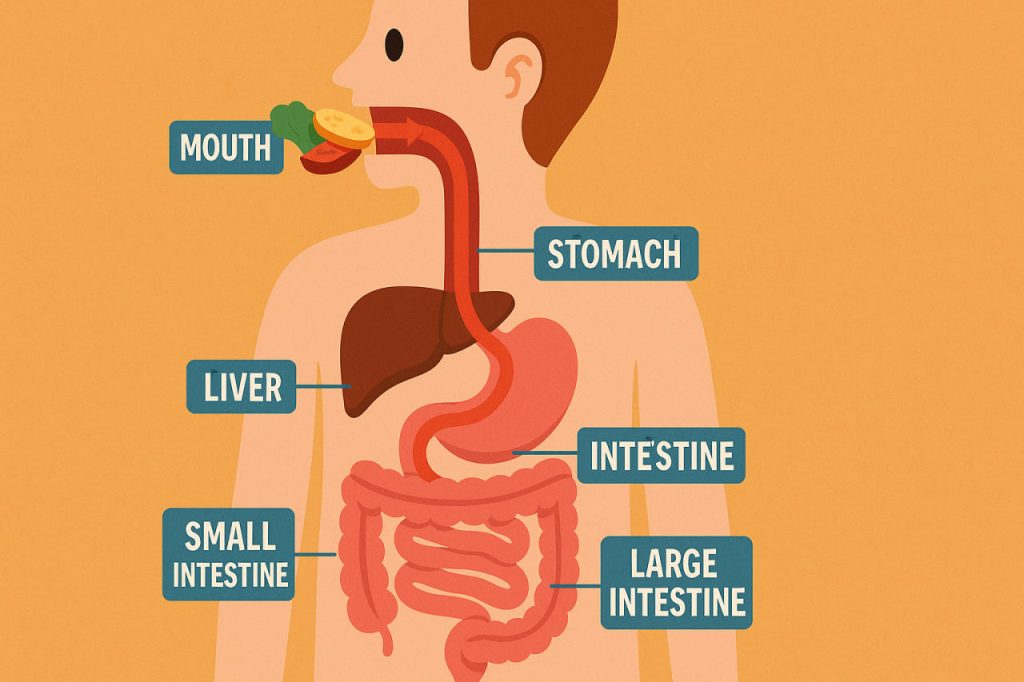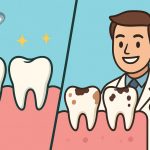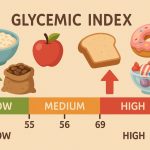Eating may seem simple — we take a bite, chew, and swallow — but inside the body, it triggers a highly complex chain of biological events. From the moment food enters the mouth, thousands of chemical reactions begin, turning nutrients into energy, repairing cells, and keeping every organ functioning. Understanding what happens after eating helps us appreciate the incredible efficiency of the human body and encourages mindful eating habits.
The First Stage: Digestion Begins in the Mouth
Digestion starts before food even reaches the stomach. The sight, smell, and thought of food trigger the cephalic phase — the brain sends signals to the salivary glands and stomach to prepare for digestion. When food enters the mouth:
- Saliva begins breaking down carbohydrates through an enzyme called amylase.
- Chewing (mastication) mechanically breaks food into smaller pieces, increasing surface area for enzymes to act.
- The tongue mixes food into a soft mass called a bolus, which is then swallowed.
This first stage is crucial because proper chewing allows enzymes to work effectively and prevents digestive discomfort later.
The Second Stage: The Stomach Takes Over
After swallowing, the food bolus travels down the esophagus through rhythmic muscle movements known as peristalsis. It then enters the stomach, where powerful digestive juices begin chemical breakdown.
In the stomach:
- Hydrochloric acid (HCl) kills bacteria and activates the enzyme pepsin, which digests proteins.
- The stomach muscles churn food into a semi-liquid mixture called chyme.
- Hormones such as ghrelin and gastrin regulate hunger and digestive activity.
This process usually lasts 2–4 hours, depending on the type of food eaten. Fats and proteins take longer to digest than carbohydrates.
The Third Stage: Nutrient Absorption in the Small Intestine
When chyme moves into the small intestine, the most critical phase begins — nutrient absorption. The liver, gallbladder, and pancreas play major roles here:
- The liver produces bile, stored in the gallbladder, which helps digest fats.
- The pancreas releases enzymes that break down carbohydrates, proteins, and fats.
- The walls of the small intestine are covered with millions of tiny finger-like structures called villi, which absorb nutrients into the bloodstream.
Glucose from carbohydrates, amino acids from proteins, and fatty acids from fats all enter the circulation, supplying energy to cells throughout the body.
The Fourth Stage: The Role of the Liver and Bloodstream
After absorption, nutrients travel via the portal vein to the liver — the body’s chemical processing center. Here:
- The liver filters toxins, processes nutrients, and stores excess glucose as glycogen.
- It releases nutrients back into the blood as needed, maintaining stable blood sugar levels.
- Vitamins and minerals are distributed to tissues for energy production, repair, and metabolism.
This regulation ensures the body has a steady fuel supply between meals.
The Fifth Stage: The Large Intestine and Waste Elimination
Undigested food — mainly fiber and water — moves into the large intestine (colon). There, helpful gut bacteria (microbiota) ferment fiber, producing beneficial compounds like short-chain fatty acids that support immunity and gut health.
The colon also:
- Absorbs water and electrolytes, forming solid waste.
- Prepares waste for elimination through the rectum as feces.
A healthy digestive system eliminates waste efficiently, usually within 24–48 hours after eating.
The Energy Aftermath
Once digestion and absorption are complete, the body converts nutrients into adenosine triphosphate (ATP) — the molecule that powers every cell. Depending on the food composition:
- Carbohydrates provide quick energy.
- Proteins help rebuild muscles and tissues.
- Fats supply long-term energy reserves.
The hormone insulin helps cells absorb glucose, while other hormones balance metabolism, appetite, and fat storage.
The Importance of Mindful Eating
The speed and efficiency of digestion depend heavily on our eating habits. Eating too quickly, overeating, or consuming processed food burdens the digestive system. In contrast, mindful eating — chewing slowly, avoiding distractions, and eating balanced meals — improves nutrient absorption and prevents discomfort such as bloating or reflux.
Hydration, regular physical activity, and a diet rich in fiber also keep digestion smooth and healthy.
Interesting Facts
- The human body produces about 1.5 liters of saliva every day.
- The small intestine is around 6–7 meters long, yet only a few centimeters in diameter.
- The stomach produces a new layer of mucus every few hours to protect itself from acid.
- Gut bacteria make up up to 2 kilograms of your body weight and affect both mood and immunity.
Glossary
- Chyme — a semi-liquid mass of partly digested food produced in the stomach.
- Peristalsis — rhythmic muscle contractions that move food through the digestive system.
- Villi — microscopic projections in the small intestine that absorb nutrients.
- Glycogen — stored form of glucose in the liver and muscles.
- Microbiota — the community of beneficial microorganisms living in the human gut.


